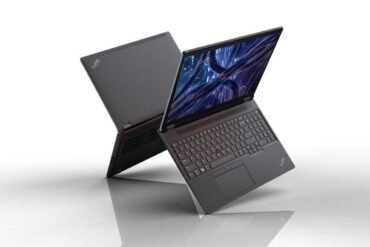Graphics Card BIOS Flashing: Unlocking Hidden Potential
Table of Contents
- Understanding Graphics Card BIOS: Introduction to Flashing
- Benefits of Flashing Graphics Card BIOS: Enhanced Performance and Features
- Risks and Precautions: Important Considerations before Flashing
- Step-by-Step Guide: How to Flash Your Graphics Card BIOS
- Unlocking Hidden Potential: Exploring the Possibilities with a Flashed Graphics Card
Understanding Graphics Card BIOS: Introduction to Flashing
When it comes to getting the most out of your graphics card, you might be surprised to learn that the BIOS (Basic Input/Output System) plays a crucial role. The BIOS is a firmware embedded on the graphics card that controls its functions and settings. Flashing the graphics card BIOS refers to updating or modifying this firmware to unlock hidden potential and improve performance.
Flashing the graphics card BIOS can be a risky process if not done correctly, as it involves rewriting the firmware. However, when done properly, it can provide various benefits such as increased clock speeds, improved power efficiency, and enhanced compatibility with newer software and games.
Before attempting to flash your graphics card BIOS, it’s essential to understand a few key points:
- Research: Before proceeding with any BIOS flashing, thoroughly research your specific graphics card model and the available BIOS versions. Make sure to find reliable sources and understand the potential risks and benefits associated with flashing.
- Backup: Prior to flashing, create a backup of your current graphics card BIOS. This is crucial as it allows you to revert to the original firmware in case something goes wrong during the flashing process.
- Compatibility: Ensure that the BIOS version you plan to flash is compatible with your graphics card model. Using an incompatible BIOS can lead to system instability or even render your graphics card useless.
- Tools: Familiarize yourself with the necessary tools and software required for flashing the graphics card BIOS. Manufacturers often provide dedicated software utilities for this purpose, so make sure to download the correct one for your graphics card.
- Caution: Flashing the graphics card BIOS is not recommended for beginners or those unfamiliar with computer hardware. If you are unsure or uncomfortable with the process, it’s best to seek professional assistance.
Flashing the graphics card BIOS can be an exciting endeavor for enthusiasts looking to maximize their graphics card’s potential. However, it’s crucial to proceed with caution and follow the necessary steps to ensure a successful and safe flashing process.
Benefits of Flashing Graphics Card BIOS: Enhanced Performance and Features
Flashing the BIOS of your graphics card can unlock hidden potential, providing you with enhanced performance and features that were previously unavailable. This process allows you to update the firmware of your graphics card, enabling it to perform at its optimal level. Here are some of the benefits you can expect from flashing your graphics card BIOS:
- Better Performance: One of the primary advantages of flashing your graphics card BIOS is the potential for improved performance. Manufacturers often release BIOS updates to address bugs, improve stability, and enhance performance. By flashing your graphics card BIOS, you can ensure that you are utilizing the latest optimizations and improvements, which can result in smoother gameplay and increased frame rates.
- Overclocking Capabilities: Flashing the BIOS can also unlock additional overclocking capabilities for your graphics card. Overclocking allows you to increase the clock speeds of your GPU and memory, resulting in faster performance. By flashing your graphics card BIOS, you can gain access to advanced overclocking options, enabling you to push your hardware to its limits and achieve higher performance.
- Compatibility and Stability: BIOS updates often address compatibility issues with newer software and games. By flashing your graphics card BIOS, you can ensure that your hardware is fully compatible with the latest software releases, preventing potential compatibility issues and improving overall stability. This can result in a smoother and more enjoyable gaming experience.
- New Features and Fixes: Manufacturers may introduce new features and fixes through BIOS updates. By flashing your graphics card BIOS, you can take advantage of these added functionalities, such as improved power management, enhanced cooling, or support for new technologies. These updates can enhance your overall user experience and keep your graphics card up to date with the latest advancements in the industry.
It is important to note that flashing the graphics card BIOS carries some risks. If not done correctly, it can potentially brick your graphics card, rendering it unusable. Therefore, it is crucial to follow manufacturer instructions carefully and ensure that you are using the correct BIOS version for your specific graphics card model.
Overall, flashing your graphics card BIOS can provide significant benefits in terms of enhanced performance, overclocking capabilities, compatibility, and access to new features. However, it is important to approach this process with caution and do thorough research before proceeding.
Risks and Precautions: Important Considerations before Flashing
Flashing the BIOS of your graphics card can be an exciting way to unlock hidden potential and improve performance. However, it is crucial to understand the risks involved and take proper precautions before proceeding with the flashing process. Here are some important considerations to keep in mind:
- Potential Damage: Flashing the graphics card BIOS carries a risk of damaging the card if not done correctly. If the process is interrupted or if an incompatible BIOS is flashed, it can render your graphics card unusable. It is essential to follow the instructions carefully and ensure that you have a backup plan in case something goes wrong.
- Compatibility: Not all graphics cards can be flashed with a custom BIOS. It is crucial to research and verify whether your specific graphics card model supports BIOS flashing. Flashing an incompatible BIOS can lead to permanent damage, so double-checking compatibility is essential.
- Warranty Void: Flashing the BIOS of your graphics card usually voids the manufacturer’s warranty. If your card is still under warranty, it is important to consider whether the potential gains outweigh the loss of warranty coverage. In some cases, it may be better to wait until the warranty period expires before attempting to flash the BIOS.
- Data Loss: During the flashing process, there is a risk of data loss. It is recommended to back up any important files or data stored on your computer before proceeding. This precaution ensures that even if something goes wrong, you will not lose valuable information.
- Expertise and Resources: Flashing the BIOS requires technical knowledge and expertise. If you are not confident in your abilities, it is advisable to seek assistance from a professional or experienced individual. Additionally, ensure that you have a stable power supply and a reliable internet connection during the flashing process.
Remember, flashing the BIOS of your graphics card can have significant benefits, but it is not without risks. By understanding and considering these important precautions, you can minimize the chances of encountering problems and maximize the potential gains from unlocking hidden potential.
Step-by-Step Guide: How to Flash Your Graphics Card BIOS
Flashing your graphics card BIOS can be a useful process to unlock hidden potential and improve performance. However, it is important to proceed with caution as BIOS flashing can be risky if not done correctly.
Follow these steps to safely flash your graphics card BIOS:
- Step 1: Research and preparation – Start by identifying your graphics card model and manufacturer. Visit the manufacturer’s website to locate the latest BIOS version available for your specific card. Read the release notes and any related documentation to ensure compatibility and understand the changes.
- Step 2: Backup your current BIOS – Before proceeding with the flash, it is crucial to create a backup of your existing BIOS. This can be done using specialized software provided by your graphics card manufacturer or third-party tools.
- Step 3: Download and extract the new BIOS – Once you have the correct BIOS version, download it from the manufacturer’s website and extract the files to a location on your computer.
- Step 4: Create a bootable USB drive – To flash the BIOS, you will need to create a bootable USB drive. Use a reliable tool, such as Rufus, to format the USB drive and make it bootable.
- Step 5: Enter the BIOS setup – Restart your computer and enter the BIOS setup by pressing the designated key during the boot process. This key varies depending on your motherboard manufacturer, but it is often Del, F2, or F12.
- Step 6: Flash the new BIOS – Insert the bootable USB drive and select it as the primary boot device in the BIOS setup. Save the changes and restart your computer. Follow the on-screen instructions to flash the new BIOS from the USB drive.
- Step 7: Verify and test – After the BIOS flash is complete, restart your computer and enter the BIOS setup again. Ensure that the new BIOS version is correctly installed. Test your graphics card for stability and performance improvements.
Remember, BIOS flashing should only be done if you are experiencing specific issues or if you have expert knowledge in overclocking and tweaking hardware settings. Improper flashing can potentially damage your graphics card or void its warranty. Proceed with caution and follow the manufacturer’s instructions precisely to ensure a successful BIOS flash.
Unlocking Hidden Potential: Exploring the Possibilities with a Flashed Graphics Card
Graphics Card BIOS flashing is a process that allows users to modify the firmware of their graphics card, unlocking hidden potential and exploring a world of possibilities. By flashing the BIOS, users can enhance the performance, overclock capabilities, and even enable additional features on their graphics card.
Here are some key benefits of flashing your graphics card’s BIOS:
- Improved Performance: BIOS flashing can boost the performance of your graphics card by increasing clock speeds, voltage limits, and power limits. This can result in smoother gameplay, faster rendering, and improved overall system performance.
- Overclocking Capabilities: Flashing the BIOS can unlock advanced overclocking options, allowing users to push their graphics card to its maximum potential. With increased clock speeds and voltage control, gamers and creative professionals can squeeze out every last drop of performance from their graphics card.
- Enabling Additional Features: Some graphics cards come with hardware features that are disabled by default in the BIOS. By flashing the graphics card’s BIOS, users can enable these hidden features, such as extra shader units or pixel pipelines, unlocking additional performance and functionality.
- Compatibility with Custom Firmware: BIOS flashing opens the door to custom firmware options, allowing users to install modified BIOS versions created by the community. These custom firmware versions often offer unique optimizations and features not available in the stock BIOS.
- Future-Proofing: Flashing the BIOS can provide future-proofing for your graphics card. As new technologies and optimizations are developed, custom BIOS versions may become available, allowing you to keep your graphics card up to date and relevant for longer.
Before attempting to flash your graphics card’s BIOS, it’s important to note that this process carries some risks. Incorrect flashing or incompatible BIOS versions can potentially brick your graphics card. It’s crucial to thoroughly research and follow reputable guides, ensuring compatibility and taking necessary precautions to minimize the risk.
Graphics Card BIOS flashing is an advanced technique that can unlock hidden potential and elevate your gaming or creative experience. With improved performance, overclocking capabilities, and the ability to enable additional features, flashing your graphics card’s BIOS can breathe new life into your system and take it to the next level.

























